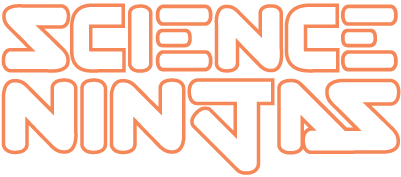Frequently Asked Questions and Alternate Rules
Gameplay
Instruction Book is Different?
Difference Between "Playing" a Molecule and "Forming" it?
Helium Card?
Run out of molecules?
Ordering
Can I order Valence if I live outside the US?
Science
Is the science in Valence real?
Why can't I make Methane (or some other molecule)?
About Acid / Base reactions
What are Deadly Carbonyls?
Is NaKO a molecule?
Alternate Rules
Younger Learners
The Instruction Manual seems to have different rules for Molecules than what is printed on the card. Which rules should I follow?
Follow the instructions on the cards! Our apologies - there was a printing error with some of our new games and they were packaged with the old instructions. We found some of the old rules (draw a card from an opponent when you form a Carbon Dioxide, discard all Oxygen when forming Deadly Carbonyl, the low value of Salt) to be cumbersome for gameplay so our new rules streamlined these processes. You can read the new instruction book here!
What's the difference between "playing" a molecule" and "making" it?
There is no difference! We apologize, this is one of the problems with the old cards and instruction manual that did not use consistent language. If you have an older version of the game that talks about "playing" molecules, please consider this term to mean when a player initially "makes" a molecule from their element cards.
Is the Helium card an element or a molecule?
Helium already has a full valence shell, so it doesn't have to combine with any other element. You draw it from the Element Deck but play it as if it were a molecule! And since you hand the Element cards you're holding to the player to the left, it probably makes sense to play any other molecules you have in your hand before playing the Helium card.
What happens when we run out of a type of molecule?
If you run out of a molecule you cannot make that molecule. We tried to design the game so this would happen very infrequently.
I'm not from the US and I'd like to order Valence. What are my options?
I personally mail out all the international orders. If you're looking for one game, check out that option on the buy Valence page! If you're looking for more than one game, please send me an email.
Is the science in Valence real?
We made sure the science of Valence is accurate. The Science Ninjas team includes two PhD chemical engineers and there has always been a commitment to ‘getting the science right’ while making sure Valence was as fun and simple to learn as possible.
In addition to our two primary science advisors we would like to acknowledge the help of several scientists who have advised us on Valence:
Dr. Jonathan Levine (National Energy Technology Laboratory)
Dr. Teri Dankovich (Carnegie Mellon University)
Dr. Cantwell Carson (National Energy Technology Laboratory)
Dr. Jeffrey Lancaster (Columbia University)
Dr. Mark Biscoe (City University of New York)
(Soon to be Dr.) Steve Crowley (City University of New York)
Have a science question about our game? Send it to: info@scienceninjas.net. Here are some questions that have come up so far:
Why can't I make (insert molecule here)?
A lot of people have asked why they can't make Methane, or O2, or some other molecule. We chose a single oxidation state for each element to make the game more workable. That's why you can't make methane (CH4) even though you have all the proper elements. However, with our next version of Valence, we're going to do some different things with the oxidation states to provide more variety.
In the game, Acids and Bases react to form Salt and Water, and Deadly Carbonyls and Water react to form an Acid and CO2. Are these both real reactions?
Yes! The acid / base reaction or acid / metal oxide reactions are common reactions for students to learn about in school (metal oxides are bases too actually!) and they create a salt and water when they combine as: NaOH + HCl -> H2O + NaCl. Typically the reaction between water and a deadly carbonyl looks like this: COCl2 + H2O -> CO2 + 2HCl (in this case the Deadly Carbonyl is COCl2 - phosgene!). In Valence, all our reactions happen in nature, but the stoichiometry isn’t always perfect, since if you really had a phosgene and a water, you should technically get 2 acids.
What are Deadly Carbonyls? And are they really deadly?
Carbonyls are molecules that have a C=O bond. In the first version of Valence, all the molecules that you can make include halogens (Cl and F), but in real life you can have many different type of carbonyls, some with metals even. Many of them are deadly, but in different ways. For instance Phosgene (COCl2) has been used as a chemical weapon, particularly during WWI. Ketones like Formaldehyde or Metal Carbonyls are often carcinogenic.
I can make NaKO in the game - is that a real molecule?
One of our science advisors Cantwell responded to this one: “They (Na2O and K2O) both have the same space group, cF12. So I imagine there is some solid solubility, but I can’t find the binary phase diagram.” In other words, we decided that it could be a metal oxide, it just might be very hard to make in the lab...(and it’s still kind of hard to make in Valence!)
Junior Rules
If you're intimidated by the rules of Valence or are playing with younger learners, you can play without Molecule functions. This basically means ignoring the rules on the bottom of the Molecule cards. This way of playing makes Valence more of a math and color matching game and could be easier for younger learners to process.
Have an idea for an alternate rule? We'd love to hear it! Let us know at info@scienceninjas.net or on our Facebook page!




